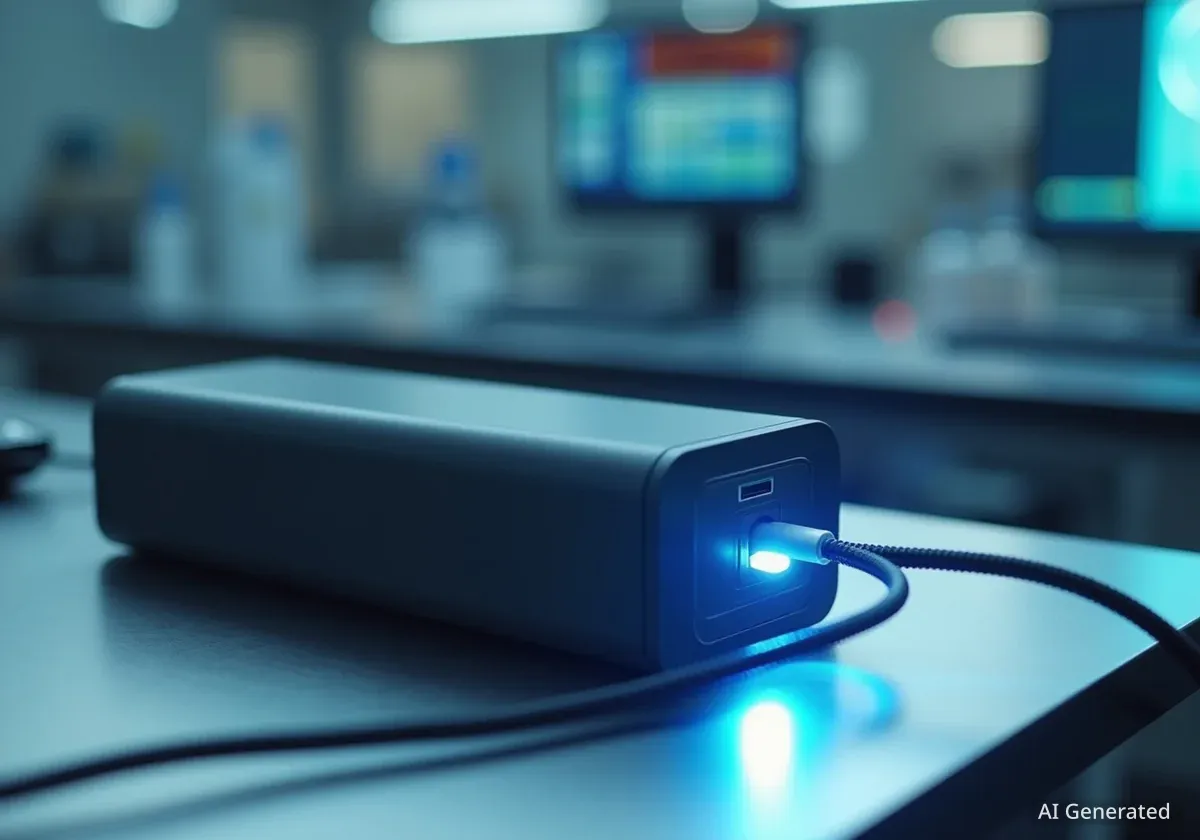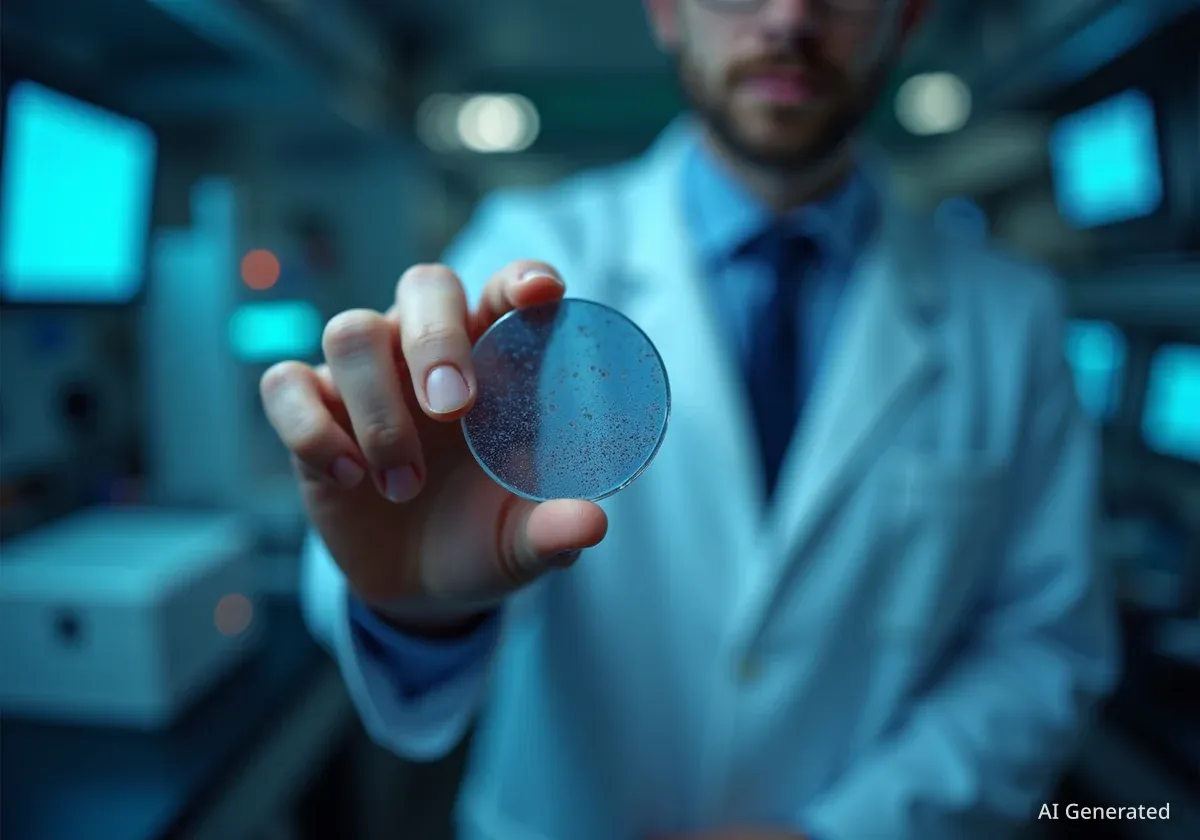Researchers at Northwood University have developed a new solid-state battery technology capable of fully charging in just 10 minutes. The breakthrough, detailed in the latest issue of the journal Nature Energy, could significantly impact the electric vehicle and consumer electronics industries.
The lithium-sulfur design not only offers rapid charging but also boasts double the energy density of current lithium-ion batteries. This advancement promises longer-lasting devices and electric vehicles with extended range, while also utilizing more abundant and cost-effective materials.
Key Takeaways
- A new solid-state battery has been developed that can charge from 0 to 100% in approximately 10 minutes.
- The battery has double the energy density of standard lithium-ion batteries, potentially doubling the range of EVs.
- It uses abundant materials like sulfur, reducing dependence on cobalt and nickel, which could lower manufacturing costs.
- The technology is projected to retain over 90% of its capacity after 2,000 charge cycles, indicating a long lifespan.
A Major Advancement in Energy Storage
For years, the limitations of lithium-ion batteries have been a bottleneck for technological progress. Slow charging times, limited capacity, and reliance on expensive and ethically challenging materials like cobalt have constrained innovation. The team at Northwood University's Institute for Materials Science aimed to solve these problems simultaneously.
Their solution is a solid-state lithium-sulfur (Li-S) battery. Unlike traditional batteries that use a liquid electrolyte to move ions between the anode and cathode, this new design uses a solid ceramic electrolyte. This fundamental change is key to its enhanced safety and performance.
Background: The Problem with Liquid Electrolytes
Most batteries in smartphones and EVs use a flammable liquid electrolyte. This component is a primary cause of battery fires and explosions. It also contributes to the formation of dendrites—tiny, needle-like structures that can grow inside the battery, causing short circuits and reducing its lifespan. Solid-state designs eliminate this risk.
According to the published study, the new battery not only charges rapidly but also demonstrates remarkable durability. Test units maintained more than 90% of their original capacity after 2,000 full charge and discharge cycles, which is equivalent to several years of heavy, everyday use for a smartphone or over 500,000 miles for an electric vehicle.
How the New Battery Technology Works
The core innovation lies in the battery's unique architecture. The team, led by Dr. Alistair Finch, developed a proprietary ceramic electrolyte that is highly conductive for lithium ions but also stable enough to prevent dendrite formation. This allows for an extremely fast flow of ions during charging without compromising safety.
"We engineered the material at the atomic level to create 'ion highways' that allow for unprecedented charging speeds," Dr. Finch explained in a university press release. "By replacing the liquid electrolyte with our stable solid material, we've solved two of the biggest problems in battery technology: safety and speed."
The battery uses a lithium metal anode, which offers a much higher energy storage potential than the graphite anodes used in current batteries. The cathode is made primarily of sulfur, a byproduct of the petroleum industry that is both abundant and inexpensive. This combination is what allows for such a high energy density.
By the Numbers: Key Performance Metrics
- Energy Density: 500 Wh/kg (compared to ~250 Wh/kg for typical lithium-ion)
- Charging Time: ~10 minutes for a full 0-100% charge
- Cycle Life: >2,000 cycles with >90% capacity retention
- Operating Temperature: -20°C to 60°C
Implications for Consumer Electronics and EVs
The potential applications for this technology are vast. For consumers, it could mean a smartphone that charges fully in the time it takes to make a cup of coffee and lasts for two to three days on a single charge. Laptops, tablets, and other portable devices would also benefit from longer battery life and faster refueling.
However, the most significant impact could be on the electric vehicle market. Range anxiety and long charging times are two of the biggest barriers to widespread EV adoption. A battery that can provide a 500-mile range and recharge in 10 minutes would make EV ownership as convenient as owning a gasoline-powered car.
Furthermore, the reduced reliance on cobalt and nickel could lead to cheaper EV manufacturing. According to industry analysts, the battery pack accounts for up to 30% of an EV's total cost. Using more common materials like sulfur could make electric vehicles more affordable and accessible to a broader market.
Challenges and the Road to Commercialization
While the laboratory results are promising, bringing this technology to the mass market will take time. The primary challenge is scaling up the manufacturing process for the solid-state electrolyte from laboratory batches to industrial volumes while maintaining quality and keeping costs low.
Dr. Finch's team has already patented their technology and is collaborating with industry partners to develop manufacturing prototypes. They estimate that the first commercial applications could appear in small consumer electronics within three to five years.
Widespread use in electric vehicles may take longer, potentially seven to ten years, as automotive batteries require rigorous testing for safety, durability, and performance under extreme conditions. Despite the hurdles, this breakthrough represents a critical step toward a future powered by more efficient and sustainable energy storage.





